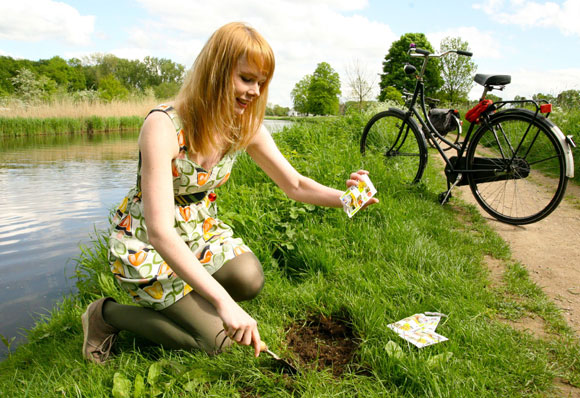It’s good to see that the Open Spaces Society is still championing the cause of green spaces across England and Wales as it has done since 1865. With changes to the planning system, it good to see that open spaces aren’t forgotten. They have just announced the short-list of their first-ever Open Space Award. Four community based projects are in the running for the Award which will be announced at the Open Spaces Society AGM on 10th July. They have launched the accolade to celebrate the grass-roots work being done by many small groups to boost their open spaces for the enjoyment of local people.
The shortlisted entries are:
- Royd Regeneration in Mytholmroyd, Calderdale: for its work to refurbish the neglected Mytholmroyd Memorial Garden.
- The Bishop’s Meadow Trust at Farnham in Surrey: where local people set up a charity to buy an under-threat local meadow and ensure it remained a community asset for generations to come.
- Full Frontal in, Rochester, Kent: where neighbours united to improve the look of their streets with a community gardening project that began on their doorsteps.
- Our Green Space Project in Cumbria: where five communities were helped to rejuvenate and protect their green space for the future.
All the projects have been been visited by judges from Open Spaces Society who will decide the winner based on the efforts by communities to enhance and safeguard their local open spaces and to ensure long-lasting benefits for the surrounding communities.
Chairman of Open Spaces Society’s trustees and a member of the judging panel Tim Crowther said: “As judges we were looking for projects which were strongly rooted in securing long term benefits for local communities; were the result of ‘bottom-up’ rather than ‘top-down’ activity; and of course promote the Open Spaces Society’s objectives.
“All the nominations showed evidence of these criteria to some degree. The schemes we have shortlisted are all very different and we, the judges, really enjoyed visiting the sites and meeting those inspired people who have driven the projects forward.
Mr Crowther added that the task of deciding the shortlist was a tough one. “The entries we didn’t shortlist were providing real benefits for local communities. There’s a lot of good work going on around the country and we’ll be highlighting these projects and sharing their great stories on our website,” he added.
Vice-chair and fellow trustee Jean Macdonald, came up with the idea and hopes it will become an annual event. As the default tends to be favouring a ‘build our way out of recession at all costs” approach the role of champions for Open Spaces has never been more crucial.

